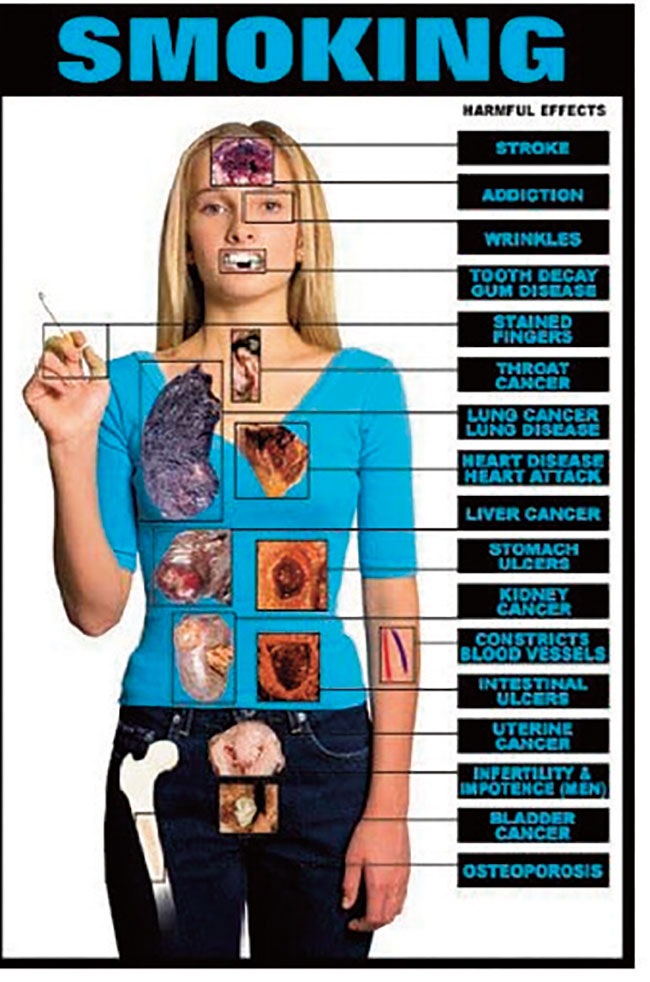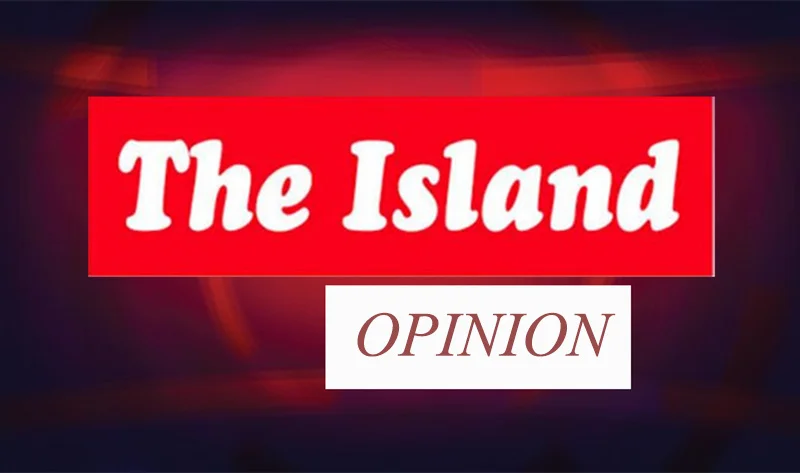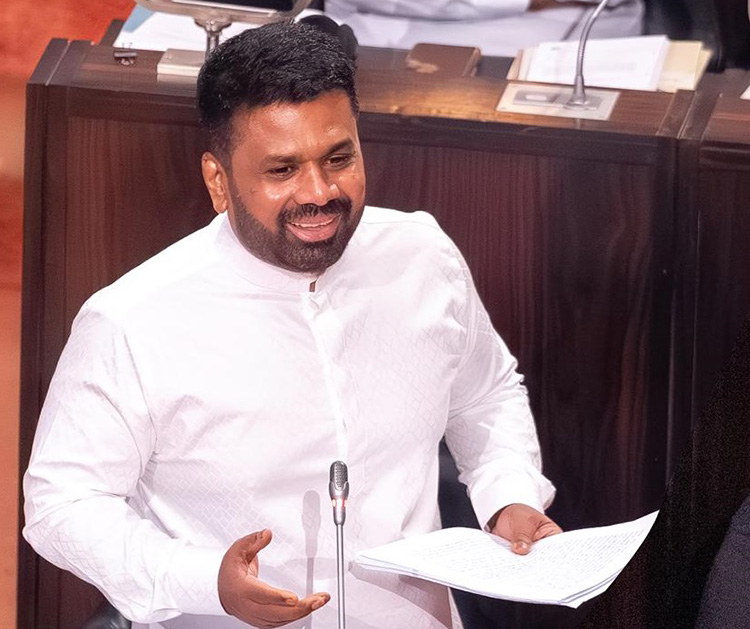Opinion
Bali Declaration: Is it the clarion call to #endTobacco?

By SHOBHA SHUKLA, BOBBY RAMAKANT – CNS
Tobacco use is among the unhealthy behaviours that result in preventable burden of cancers, strokes, and heart diseases, said Budi Gunadi Sadikin, Indonesia’s health minister. In Indonesia tobacco use is the second largest risk factor for untimely deaths, he added. World Health Organization had earlier underlined that without clamping tobacco use, we cannot deliver on the promises enshrined in the Sustainable Development Goals.
Indonesia has walked the talk on building a grounds-up movement against tobacco. In 2011, twelve Mayors had come together to forge a Mayors’ Alliance to advance tobacco control in their respective cities. Today in 2022, there are over 150 Mayors of different Indonesian cities that are part of this Alliance, who are adapting as well as enforcing local laws to reduce tobacco use, said Dr Bima Arya Sugiarto, Co-Chair of Asia Pacific Cities Alliance for Health and Development (APCAT) and Mayor of Bogor City in Indonesia. “Mayors’ Alliance has been the main driver for banning tobacco advertising and promotion, as well as preventing tobacco industry interference in public policy” he said.
Both were speaking at the opening ceremony of 7th Asia Pacific Summit of Mayors (7th APCAT Summit or #APCAT2022) being held in Bali, Indonesia.Another sterling example of grounds-up tobacco control movement in Indonesia is the fact that “as of November 2022, over 300 cities have adopted the local smokefree laws,” said Dr Bima Arya.
That is why Indonesian health minister called for stronger partnerships “to reduce tobacco use” and “expand the on-the-ground effective programmes for tobacco control.”
“I would like to extend my gratitude to Mayors who have passed local smokefree laws. It is important for central government to collaborate with local governments to achieve tobacco control,” said the Indonesian health minister.
Despite alarming levels of tobacco industry interference, it is indeed commendable that Mayors and sub-national leaders of Indonesia have been able to advance tobacco control.
Agrees Kelly Larson of Bloomberg Philanthropies: “We acknowledge the role of sub-national leaders in Indonesia and commend the Mayors of over 300 cities who have passed local smokefree laws, that protect 75% of the country’s population from the hazards of tobacco smoke.” Kelly Larson shared that prioritising tobacco control and public health in New York resulted in increased life expectancy of 2 years for its citizens.
Not surprisingly, tobacco industry and its front groups are trying to create hurdles when local sub-national leaders try to advance tobacco control and health promotion. Effective enforcement of strong tobacco control laws hurt the industry profits. For instance, in 2017, Bogor City had become the first Indonesian city to implement a point-of-sale tobacco display ban as part of its smokefree law. But soon after a legal battle ensued. Finally, in February 2020, the city of Bogor won the court case when Supreme Court had upheld its ban on the display of tobacco products at point-of-sale.
While exposing how tobacco industry approaches election candidates to influence public policy, Mayor of Bogor City Dr Bima Arya said in 7th APCAT Summit opening session that “every candidate of local elections was approached by the tobacco industry…”
#APCAT2022 Declaration gives hope for a better tomorrow
“We, the delegates of the 7th Asia Pacific Summit of Mayors, recognize that APCAT is a vital platform to share experiences, shape local actions, and secure greater leadership as well as look for synergistic actions between specific health and development programmes.

We commit to accelerate progress towards eventually ending tobacco use, as well as preventing the avoidable burden of NCDs, eliminating Tuberculosis, and improving synergy between health and development programmes and promoting integrated responses where possible, thereby reducing disease burden and averting untimely deaths, by:
– Leading effective implementation of tobacco control programmes that include smokefree environments; a complete ban on tobacco advertising, promotion, and sponsorship; promotion of larger graphic health warnings with plain packaging on tobacco packs; smoking cessation programmes; and a ban on electronic cigarettes, heated tobacco products, shisha, and other similar products;
– Working with national government and policy makers to raise taxes and prices on unhealthy commodities (such as, but not limited to, tobacco products, alcohol, sugary and sweetened beverages);
– Ensuring accountability to prevent interferences and rejecting funding, logistics, donations, or grants from, and partnerships with, any entity related to any unhealthy commodity industries (such as, but not limited to, tobacco, alcohol, sugary and sweetened beverages);
– Investing in tobacco control for prevention of tuberculosis, non-communicable disease, and stunting. It includes smoking cessation in TB and NCD clinics, and family health programs; universal screening for TB and NCDs
– Adopting One Health approaches and processes to ensure that “a healthy city is a resilient city”.
Every tobacco-related death is preventable
The 7th Asia Pacific Summit of Mayors, which opened today in Bali, Indonesia, is jointly organised by the Asia Pacific Cities Alliance for Health and Development (APCAT), Ministry of Health, Republic of Indonesia; Ministry of Home Affairs, Republic of Indonesia; National Centre for Health Promotion, Ministry of Health, Cambodia; Bloomberg Philanthropies; Cities of Bogor, Denpasar and Klungkung of Indonesia; Balanga City, Philippines; Association of All Health Offices Indonesia (ADINKES), Indonesia Mayor and Regent Alliance, Indonesian Public Health Association; Udayana Central; Campaign for Tobacco Free Kids, Vital Strategies; Tobacco Free Generation International, The International Union Against Tuberculosis and Lung Disease (The Union); APCAT Parliamentarians and Asia Pacific Media Alliance for Health and Development (APCAT Media).
Over 1000 national and sub-national leaders, public health experts are attending the 7th APCAT Summit in Bali, Indonesia in person and virtually. Participants include mayors, governors, ministers, members of parliament, tobacco control advocates, and media from across the Asia Pacific region.
Over 8.67 million people die of tobacco use every year (out of which one million die due to second and third-hand tobacco smoke). Despite the crippling onslaught of COVID-19 public health emergency and humanitarian crises, tobacco industry has heightened its deceptive strategies to protect and expand its markets. In addition to the mountainous death toll and avoidable disease burden, tobacco use has also resulted in an annual economic loss of nearly USD 2 trillion to the global economy.
.
Opinion
The policy of Sinhala Only and downgrading of English

In 1956 a Sri Lankan politician riding a great surge of populism, made a move that, at a stroke, disabled a functioning civil society operating in the English language medium in Sri Lanka. He had thrown the baby out with the bathwater.
It was done to huge, ecstatic public joy and applause at the time but in truth, this action had serious ramifications for the country, the effects have, no doubt, been endlessly mulled over ever since.
However, there is one effect/ aspect that cannot be easily dismissed – the use of legal English of an exact technical quality used for dispensing Jurisprudence (certainty and rational thought). These court certified decisions engendered confidence in law, investment and business not only here but most importantly, among the international business community.
Well qualified, rational men, Judges, thought rationally and impartially through all the aspects of a case in Law brought before them. They were expert in the use of this specialised English, with all its meanings and technicalities – but now, a type of concise English hardly understandable to the casual layman who may casually look through some court proceedings of yesteryear.
They made clear and precise rulings on matters of Sri Lankan Law. These were guiding principles for administrative practice. This body of case law knowledge has been built up over the years before Independence. This was in fact, something extremely valuable for business and everyday life. It brought confidence and trust – essential for conducting business.
English had been developed into a precise tool for analysing and understanding a problem, a matter, or a transaction. Words can have specific meanings, they were not, merely, the play- thing of those producing “fake news”. English words as used at that time, had meaning – they carried weight and meaning – the weight of the law!
Now many progressive countries around the world are embracing English for good economic and cultural reasons, but in complete contrast little Sri Lanka has gone into reverse!
A minority of the Sinhalese population, (the educated ones!) could immediately see at the time the problems that could arise by this move to down-grade English including its high-quality legal determinations. Unfortunately, seemingly, with the downgrading of English came a downgrading of the quality of inter- personal transactions.
A second failure was the failure to improve the “have nots” of the villagers by education. Knowledge and information can be considered a universal right. Leonard Woolf’s book “A village in the Jungle” makes use of this difference in education to prove a point. It makes infinitely good politics to reduce this education gap by education policies that rectify this important disadvantage normal people of Sri Lanka have.
But the yearning of educators to upgrade the education system as a whole, still remains a distant goal. Advanced English spoken language is encouraged individually but not at a state level. It has become an orphaned child. It is the elites that can read the standard classics such as Treasure Island or Sherlock Holmes and enjoy them.
But, perhaps now, with the country in the doldrums, more people will come to reflect on these failures of foresight and policy implementation. Isn’t the doldrums all the proof you need?
by Priyantha Hettige
Opinion
GOODBYE, DEAR SIR

It is with deep gratitude and profound sorrow that we remember Mr. K. L. F. Wijedasa, remarkable athletics coach whose influence reached far beyond the track. He passed away on November 4, exactly six months after his 93rd birthday, having led an exemplary and disciplined life that enabled him to enjoy such a long and meaningful innings. To those he trained, he was not only a masterful coach but a mentor, a friend, a steady father figure, and an enduring source of inspiration. His wisdom, kindness, and unwavering belief in every young athlete shaped countless lives, leaving a legacy that will continue to echo in the hearts of all who were fortunate enough to be guided by him.
I was privileged to be one of the many athletes who trained under his watchful eye from the time Mr. Wijedasa began his close association with Royal College in 1974. He was largely responsible for the golden era of athletics at Royal College from 1973 to 1980. In all but one of those years, Royal swept the board at all the leading Track & Field Championships — from the Senior and Junior Tarbat Shields to the Daily News Trophy Relay Carnival. Not only did the school dominate competitions, but it also produced star-class athletes such as sprinter Royce Koelmeyer; sprint and long & triple jump champions Godfrey Fernando and Ravi Waidyalankara; high jumper and pole vaulter Cletus Dep; Olympic 400m runner Chrisantha Ferdinando; sprinters Roshan Fernando and the Indraratne twins, Asela and Athula; and record-breaking high jumper Dr. Dharshana Wijegunasinghe, to name just a few.
Royal had won the Senior & Junior Tarbats as well as the Relay Carnival in 1973 by a whisker and was looking for a top-class coach to mould an exceptionally talented group of athletes for 1974 and beyond. This was when Mr. Wijedasa entered the scene, beginning a lifelong relationship with the athletes of Royal College from 1974 to 1987. He received excellent support from the then Principal, late Mr. L. D. H. Pieris; Vice Principal, late Mr. E. C. Gunesekera; and Masters-in-Charge Mr. Dharmasena, Mr. M. D. R. Senanayake, and Mr. V. A. B. Samarakone, with whom he maintained a strong and respectful rapport throughout his tenure.
An old boy of several schools — beginning at Kandegoda Sinhala Mixed School in his hometown, moving on to Dharmasoka Vidyalaya, Ambalangoda, Moratu Vidyalaya, and finally Ananda College — he excelled in both sports and studies. He later graduated in Geography, from the University of Peradeniya. During his undergraduate days, he distinguished himself as a sprinter, establishing a new National Record in the 100 metres in 1955. Beyond academics and sports, Mr. Wijedasa also demonstrated remarkable talent in drama.
Though proudly an Anandian, he became equally a Royalist through his deep association with Royal’s athletics from the 1970s. So strong was this bond that he eventually admitted his only son, Duminda, to Royal College. The hallmark of Mr. Wijedasa was his tireless dedication and immense patience as a mentor. Endurance and power training were among his strengths —disciplines that stood many of us in good stead long after we left school.
More than champions on the track, it is the individuals we became in later life that bear true testimony to his loving guidance. Such was his simplicity and warmth that we could visit him and his beloved wife, Ransiri, without appointment. Even long after our school days, we remained in close touch. Those living overseas never failed to visit him whenever they returned to Sri Lanka. These visits were filled with fond reminiscences of our sporting days, discussions on world affairs, and joyful moments of singing old Sinhala songs that he treasured.
It was only fitting, therefore, that on his last birthday on May 4 this year, the Old Royalists’ Athletic Club (ORAC) honoured him with a biography highlighting his immense contribution to athletics at Royal. I was deeply privileged to co-author this book together with Asoka Rodrigo, another old boy of the school.
Royal, however, was not the first school he coached. After joining the tutorial staff of his alma mater following graduation, he naturally coached Ananda College before moving on to Holy Family Convent, Bambalapitiya — where he first met the “love of his life,” Ransiri, a gifted and versatile sportswoman. She was not only a national champion in athletics but also a top netballer and basketball player in the 1960s. After his long and illustrious stint at Royal College, he went on to coach at schools such as Visakha Vidyalaya and Belvoir International.
The school arena was not his only forte. Mr. Wijedasa also produced several top national athletes, including D. K. Podimahattaya, Vijitha Wijesekera, Lionel Karunasena, Ransiri Serasinghe, Kosala Sahabandu, Gregory de Silva, Sunil Gunawardena, Prasad Perera, K. G. Badra, Surangani de Silva, Nandika de Silva, Chrisantha Ferdinando, Tamara Padmini, and Anula Costa. Apart from coaching, he was an efficient administrator as Director of Physical Education at the University of Colombo and held several senior positions in national sporting bodies. He served as President of the Amateur Athletic Association of Sri Lanka in 1994 and was also a founder and later President of the Ceylonese Track & Field Club. He served with distinction as a national selector, starter, judge, and highly qualified timekeeper.
The crowning joy of his life was seeing his legacy continue through his children and grandchildren. His son, Duminda, was a prominent athlete at Royal and later a National Squash player in the 1990s. In his later years, Mr. Wijedasa took great pride in seeing his granddaughter, Tejani, become a reputed throwing champion at Bishop’s College, where she currently serves as Games Captain. Her younger brother, too, is a promising athlete.
He is survived by his beloved wife, Ransiri, with whom he shared 57 years of a happy and devoted marriage, and by their two children, Duminda and Puranya. Duminda, married to Debbie, resides in Brisbane, Australia, with their two daughters, Deandra and Tennille. Puranya, married to Ruvindu, is blessed with three children — Madhuke, Tejani, and Dharishta.
Though he has left this world, the values he instilled, the lives he shaped, and the spirit he ignited on countless tracks and fields will live on forever — etched in the hearts of generations who were privileged to call him Sir (Coach).
NIRAJ DE MEL, Athletics Captain of Royal College 1976
Deputy Chairman, Old Royalists’ Athletics Club (ORAC)
Opinion
Why Sri Lanka needs a National Budget Performance and Evaluation Office

Sri Lanka is now grappling with the aftermath of the one of the gravest natural disasters in recent memory, as Cyclone Ditwah and the associated weather system continue to bring relentless rain, flash floods, and landslides across the country.
In view of the severe disaster situation, Speaker Jagath Wickramaratne had to amend the schedule for the Committee Stage debates on Budget 2026, which was subsequently passed by Parliament. There have been various interpretations of Budget 2026 by economists, the business community, academics, and civil society. Some analyses draw on economic expertise, others reflect social understanding, while certain groups read the budget through political ideology. But with the country now trying to manage a humanitarian and economic emergency, it is clear that fragmented interpretations will not suffice. This is a moment when Sri Lanka needs a unified, responsible, and collective “national reading” of the budget—one that rises above personal or political positions and focuses on safeguarding citizens, restoring stability, and guiding the nation toward recovery.
Budget 2026 is unique for several reasons. To understand it properly, we must “read” it through the lens of Sri Lanka’s current economic realities as well as the fiscal consolidation pathway outlined under the International Monetary Fund programme. Some argue that this Budget reflects a liberal policy orientation, citing several key allocations that support this view: strong investment in human capital, an infrastructure-led growth strategy, targeted support for private enterprise and MSMEs, and an emphasis on fiscal discipline and transparency.
Anyway, it can be argued that it is still too early to categorise the 2026 budget as a fully liberal budget approach, especially when considering the structural realities that continue to shape Sri Lanka’s economy. Still some sectors in Sri Lanka restricted private-sector space, with state dominance. And also, we can witness a weak performance-based management system with no strong KPI-linked monitoring or institutional performance cells. Moreover, the country still maintains a broad subsidy orientation, where extensive welfare transfers may constrain productivity unless they shift toward targeted and time-bound mechanisms. Even though we can see improved tax administration in the recent past, there is a need to have proper tax rationalisation, requiring significant simplification to become broad-based and globally competitive. These factors collectively indicate that, despite certain reform signals, it may be premature to label Budget 2026 as fully liberal in nature.
Overall, Sri Lanka needs to have proper monitoring mechanisms for the budget. Even if it is a liberal type, development, or any type of budget, we need to see how we can have a budget monitoring system.
Establishing a National Budget Performance and Evaluation Office
Whatever the budgets presented during the last seven decades, the implementation of budget proposals can always be mostly considered as around 30-50 %. Sri Lanka needs to have proper budget monitoring mechanisms. This is not only important for the budget but also for all other activities in Sri Lanka. Most of the countries in the world have this, and we can learn many best practices from them.
Establishing a National Budget Performance and Evaluation Office is essential for strengthening Sri Lanka’s fiscal governance and ensuring that public spending delivers measurable value. Such an office would provide an independent, data-driven mechanism to track budget implementation, monitor programme outcomes, and evaluate whether ministries achieve their intended results. Drawing from global best practices—including India’s PFMS-enabled monitoring and OECD programme-based budgeting frameworks—the office would develop clear KPIs, performance scorecards, and annual evaluation reports linked to national priorities. By integrating financial data, output metrics, and policy outcomes, this institution would enable evidence-based decision-making, improve budget credibility, reduce wastage, and foster greater transparency and accountability across the public sector. Ultimately, this would help shift Sri Lanka’s budgeting process from input-focused allocations toward performance-oriented results.
There is an urgent need for a paradigm shift in Sri Lanka’s economy, where export diversification, strengthened governance, and institutional efficiency become essential pillars of reform. Establishing a National Budget Performance and Evaluation Office is a critical step that can help the country address many long-standing challenges related to governance, fiscal discipline, and evidence-based decision-making. Such an institution would create the mechanisms required for transparency, accountability, and performance-focused budgeting. Ultimately, for Sri Lanka to gain greater global recognition and move toward a more stable, credible economic future, every stakeholder must be equipped with the right knowledge, tools, and systems that support disciplined financial management and a respected national identity.
by Prof. Nalin Abeysekera ✍️
-

 Features5 days ago
Features5 days agoFinally, Mahinda Yapa sets the record straight
-

 News7 days ago
News7 days agoOver 35,000 drug offenders nabbed in 36 days
-

 News6 days ago
News6 days agoCyclone Ditwah leaves Sri Lanka’s biodiversity in ruins: Top scientist warns of unseen ecological disaster
-

 News7 days ago
News7 days agoRising water level in Malwathu Oya triggers alert in Thanthirimale
-

 Features5 days ago
Features5 days agoHandunnetti and Colonial Shackles of English in Sri Lanka
-

 Business4 days ago
Business4 days agoCabinet approves establishment of two 50 MW wind power stations in Mullikulum, Mannar region
-

 Business7 days ago
Business7 days agoSri Lanka betting its tourism future on cold, hard numbers
-

 News7 days ago
News7 days agoJetstar to launch Australia’s only low-cost direct flights to Sri Lanka, with fares from just $315^













